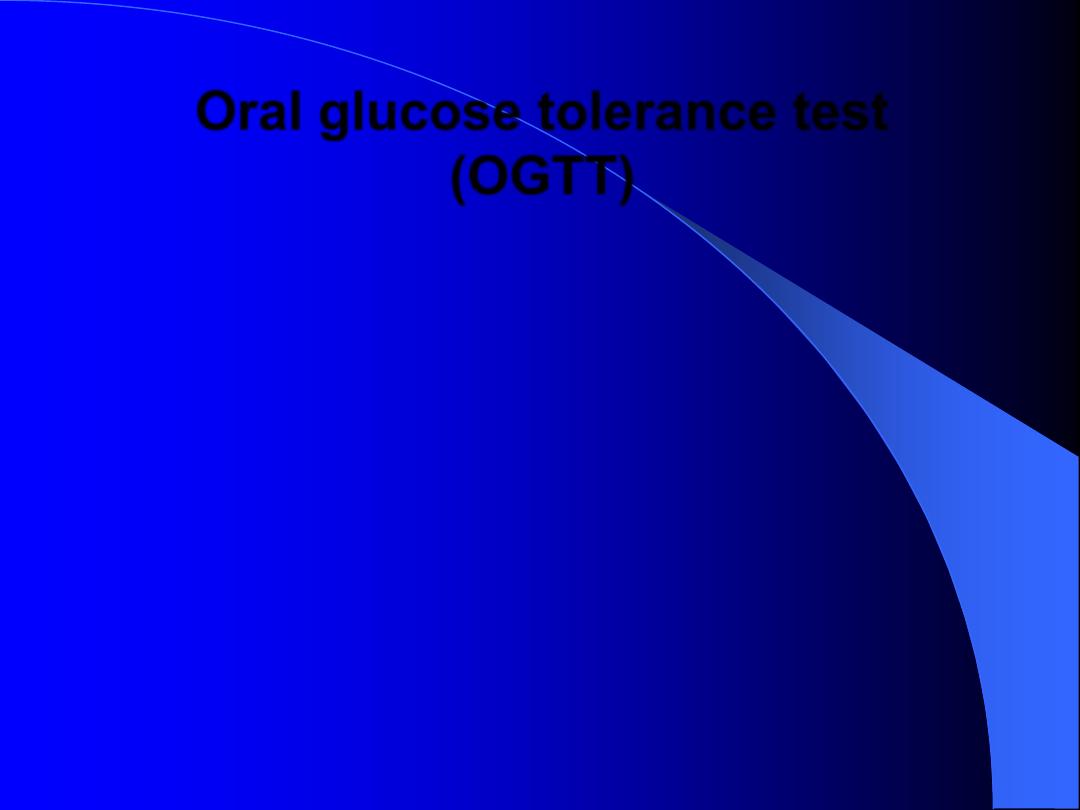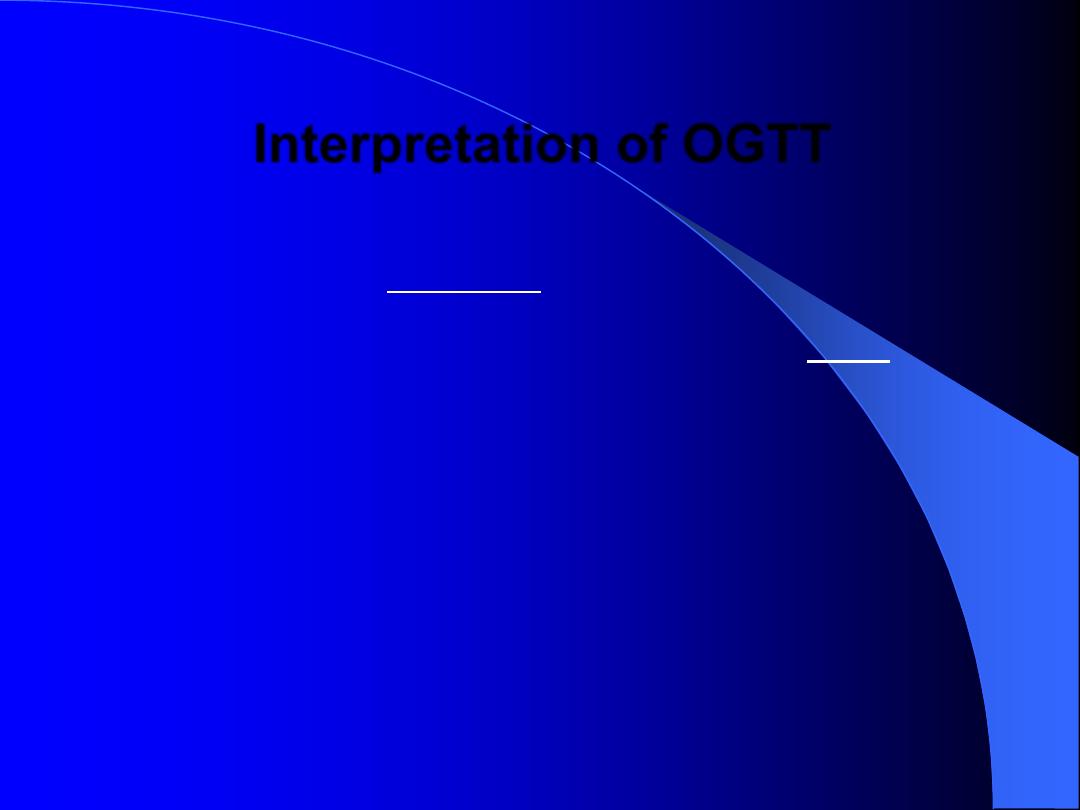
Diagnosis of diabetes:
Diabetes is confirmed by:
• plasma glucose in random sample or 2 hrs after a
75 g glucose load ≥ 11.1 mmol/L (200 mg/dL) or
• fasting plasma glucose ≥ 7.0 mmol/L (126 mg/dL)
In asymptomatic patients, two diagnostic tests are
required to confirm diabetes

In symptomatic patients, only one
diagnostic tests is required to confirm
diabetes

‘Pre-diabetes
’ is classified as:
• impaired fasting glucose ( fasting plasma
glucose = 6.1- 6.9 mmol/L
110-125 mg/DL
• impaired glucose tolerance ( fasting
plasma glucose < 7.0 mmol/L (126 mg/dL)
and 2-hr glucose after 75 g oral glucose
drink 7.8–11 mmol/L (140–199 mg/dL)

Glycaemia can be classified into three
categories:
normal, impaired (prediabetes) and diabetes.
The glycaemia cutoff that defines diabetes is
based on the level above which there is a
significant risk of microvascular complications
(retinopathy, nephropathy and neuropathy)

because there is a continuous risk of
macrovascular disease (atheroma of large
conduit blood vessels) with increasing
glycaemia in the population, people with
prediabetes have an increased risk of
cardiovascular
disease
(myocardial
infarction, stroke and peripheral vascular
disease).

The traditional way to diagnose diabetes or
prediabetes has been by using random or
fasting plasma glucose and/or an oral
glucose tolerance test (OGTT).

In 2011, the World Health Organisation
(WHO) advocated the use of glycated
haemoglobin (HbA1c) to diagnose diabetes

When a person has symptoms of diabetes,
the diagnosis can be confirmed with either a
fasting glucose of
≥ 7.0 mmol/L (126 mg/dL)
or a random glucose of
≥ 11.1 mmol/L (200
mg/dL). Asymptomatic individuals should
have a second confirmatory test.

Diabetes should not be diagnosed on capillary
blood glucose results. Alternatively, an HbA1c
of ≥ 48 mmol/mol is also diagnostic of diabetes.
As HbA1c reflects the last 2–3 months of
glycaemia, it should not be used to diagnose
diabetes where the duration of onset is short.

Prediabetes can be subclassified as:
1- ‘
impaired fasting glucose
’ (IFG), based on a
fasting plasma glucose result, or
2- ‘
impaired glucose tolerance
’ (IGT), based on
the fasting and 2hour OGTT results.

Patients with prediabetes should be
advised of their risk of progression to
diabetes, given advice about lifestyle
modification to reduce this risk (as for
type 2 diabetes), and have aggressive
management
of
cardiovascular
risk
factors
such
as
hypertension
and
dyslipidaemia

In some people (especially those with
pre
existing insulin resistance or low β-
cell mass/function), an abnormal blood
glucose result is observed during acute
severe illness, such as infection or
myocardial infarction. This
‘stress
hyperglycaemia
’ is a consequence of
hormones, such as cortisol and
catecholamines, antagonising the action
of insulin and thereby increasing insulin
resistance.

It usually disappears after the acute illness
has resolved, but affected individuals have a
significantly increased risk of type 2
diabetes in subsequent years. A similar
mechanism explains the occurrence of
diabetes in some people treated with
glucocorticoids (steroidinduced diabetes).

Oral glucose tolerance test
(OGTT)
Which patient to tested:
1- Fasting plasma glucose 6.1-6.9 mmol/L (110-
125 mg/DL)
2- Uncertainty about the diagnosis of diabetes

Preparation before the test
• Unrestricted carbohydrate diet for 3 days
• Fasted overnight for at least 8 hrs
• Rest for 30 mins
• Remain seated for the duration of the test,
with no smoking
Sampling
• Measure plasma glucose before and 2 hrs
after a 75 g oral glucose drink

Interpretation of OGTT
Fasting
2 hr after glucose
load
Impaired FG 6.1-6.9 mmol/L > 7.8 mmo/L
(110-125 mg/DL) (> 140 mg/DL)
Impaired glucose > 7 mmol/L 7.8-11 mmol/L
tolerance > 126 mg/DL (140-199 mg/dl)
Diabetics ≥ 7 mmol/L ≥ 11.1 mmol/L
(≥126 mg/DL) (≥ 200 mg/DL)
